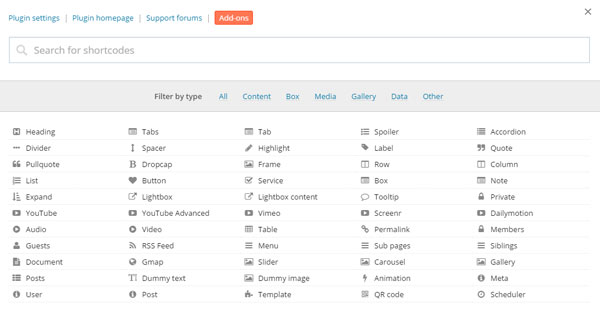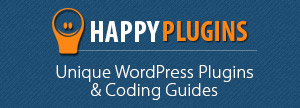
Using a Theme’s Shortcodes vs. a Stand-Alone Shortcodes Plugin
Shortcodes can help you stylize your website, add different functions (such as: tabs, tables, toggles, highlights, boxes etc.).
There are two main options to adding shortcodes to your website:
- Using a theme that has built-in shortcodes, for example: Headlines, Avada, OptimizePress 1.0 etc.
- Installing a stand-alone plugin such as: Shortcodes Ultimate
We personally have a “love-hate relationship” with shortcodes:
We love shortcodes because because they can really help improve users experience, the website’s look and feel and organize the content better.
We “hate” shortcodes because they can make the posts look messy if you use too many shortcodes in one post / page.
Using a Theme’s Shortcodes
The main downside of using a theme’s shortcodes is that it makes it more complicated to shift to a new theme if your content is wrapped with a lot of shortcodes, unless you are using a theme from the same company that supports the same shortcodes.
Just think about going over all the posts and pages of your website and changing their design and structure all over again…
Using a Stand-Alone Shortcodes Plugin
For the exact reason above we chose to work with a stand-alone plugin instead of relying on the theme’s built-in shortcodes.
We haven’t found any major downsides to using a stand-alone plugin, but there are two you might consider:
- If you don’t want to have too many plugins installed (though one more plugin won’t really make such a difference…)
- You are using a plugin that does not update on a regular and frequent basis. The WordPress platform releases frequent updates, so make sure you choose a popular plugin that has frequent updates, we recommend using Shortcodes Ultimate.
Here is a screenshot of Shortcodes Ultimate available shortcodes (enter a post and click on the “Insert Shortcode” button above the toolbar):

Shortcodes Ultimate available shortcodes
Got any insights regarding how to use shortcodes? You are more than welcome to share them with us in the comment section below.


 December 28, 2014
December 28, 2014 





 “Just wanted to let you know that the plugin is working great and incomplete registrations have gone to zero! I’m definitely going to do a review of the plugin and get it for my own site.” MaAnna Stephenson BlogAid.net
“Just wanted to let you know that the plugin is working great and incomplete registrations have gone to zero! I’m definitely going to do a review of the plugin and get it for my own site.” MaAnna Stephenson BlogAid.net
 “Bob Tolbert’s Wish List Member plugins have made life easier on us by automating processes that would normally eat up a ton of admin time. I especially appreciate Bob’s quick response time and customer service. Fact is, our membership website would not function without these plug ins.” Michael Burwell TheHangoutHelper.com
“Bob Tolbert’s Wish List Member plugins have made life easier on us by automating processes that would normally eat up a ton of admin time. I especially appreciate Bob’s quick response time and customer service. Fact is, our membership website would not function without these plug ins.” Michael Burwell TheHangoutHelper.com “This plugin is the best way to supercharge your membership signups. I was especially impressed by the developers prompt customer service!” Stan Smith PushingSocial.com
“This plugin is the best way to supercharge your membership signups. I was especially impressed by the developers prompt customer service!” Stan Smith PushingSocial.com “The Wishlist Auto Registration plugin is really great, I love it! And the support you guy’s deliver are really outstanding! Thank you so much!” Johan Skalberg kalisikaran.info
“The Wishlist Auto Registration plugin is really great, I love it! And the support you guy’s deliver are really outstanding! Thank you so much!” Johan Skalberg kalisikaran.info








